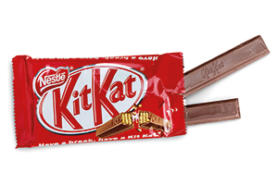Kit Kat closure?
Could this argument go still further? John Coldham considers. C-84/17 P, Société des produits Nestlé v Mondelez UK Holdings & Services, CJEU, 25th July 2018.

C-84/17 P, Société des produits Nestlé v Mondelez UK Holdings & Services, CJEU, 25th July 2018
Key points
- The owner of a mark that lacks inherent distinctive character must prove acquired distinctiveness in every Member State in respect of which the inherent distinctive character is lacking
- In certain cases, the same evidence may be relied on to show acquired distinctiveness across several Member States, for example where the relevant public of the first has a sufficient knowledge of the products and services present on the national market of the second
The CJEU has handed down its judgment in relation to Nestlé’s EU mark for the shape of its Kit Kat chocolate bar, finding that the Board of Appeal (BoA) had incorrectly found the mark to be valid.
It is the latest move in a case dating back to March 2002, when Nestlé applied for the EU shape mark, in class 30 for biscuits, among others. The mark was registered in July 2006. In March 2007, Cadbury Schweppes (now Mondelez) filed an invalidity application, arguing that the mark was devoid of distinctive character.
Parallel UK litigation proceeded between the parties regarding Nestlé’s application for a UK mark for the same shape. In May 2017, the Court of Appeal upheld Mr Justice Arnold’s first instance decision and refused to register the UK mark on the basis that Nestlé had failed to prove acquired distinctiveness in the UK.
Europe’s view
By contrast, in Europe, the General Court (GC) held in December 2016 that Nestlé had proved acquired distinctiveness not only in the UK, but also in nine other countries (Denmark, Germany, Spain, France, Italy, the Netherlands, Austria, Finland and Sweden). As at March 2002 (the filing date of the mark), the population of these countries represented almost 90 per cent of the total EU population.
Nevertheless, the GC found such a “merging” of territories was not permissible. The relevant question was whether, throughout the EU, a significant proportion of the relevant public perceive a mark as an indication of origin; lack of recognition in one part of the territory could not be offset by a higher level of awareness in another. The GC accordingly considered that the approach of the BoA, in concluding that distinctive character had been acquired through use without adjudicating on whether the mark had acquired distinctive character in Belgium, Ireland, Greece and Portugal was incorrect. (The GC seemed to forget Luxembourg.)
The CJEU agreed. Nestlé’s mark was not inherently distinctive in any part of the EU. Nestlé therefore had to prove acquired distinctiveness in every Member State. As Nestlé had not done this, it was incorrect for the BoA to have found the mark to be valid.
Though the decision sets a high bar for proving acquired distinctiveness, the CJEU highlighted that a mark owner might be able to rely on the same evidence to show acquired distinctiveness across several Member States in some circumstances. For example, where the mark owner groups more than one Member State in a distribution network and treats them as if they were one national market. Equally, there may be situations where, due to a cultural, geographic, or linguistic proximity between two Member States, the relevant public of the first has a sufficient knowledge of the products and services on the national market of the second. The evidence will still need to demonstrate that the mark is distinctive across the EU.
Potential next steps
It remains to be seen how Nestlé will take the matter forward procedurally. It is presumably too late to file additional evidence in relation to the March 2002 application, but if the existing evidence is not sufficient, Nestlé could file a new application – in which case it would have to prove acquired distinctiveness in each Member State of a significantly larger EU.
John Coldham is a Partner at Gowling WLG and a member of the CITMA Design and Copyright Working Group
Alice Stagg, a Principal Associate at Gowling, co-authored.

